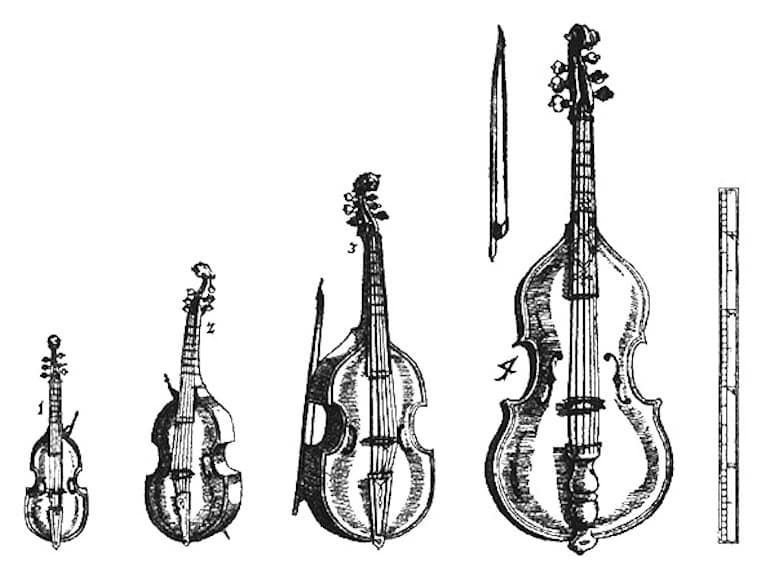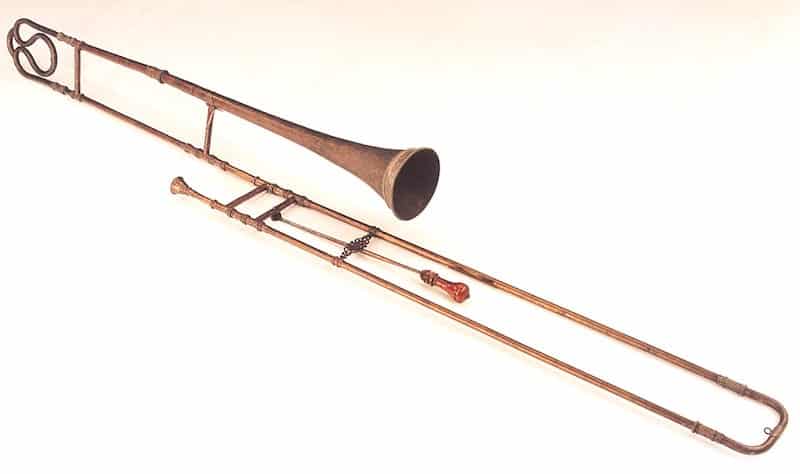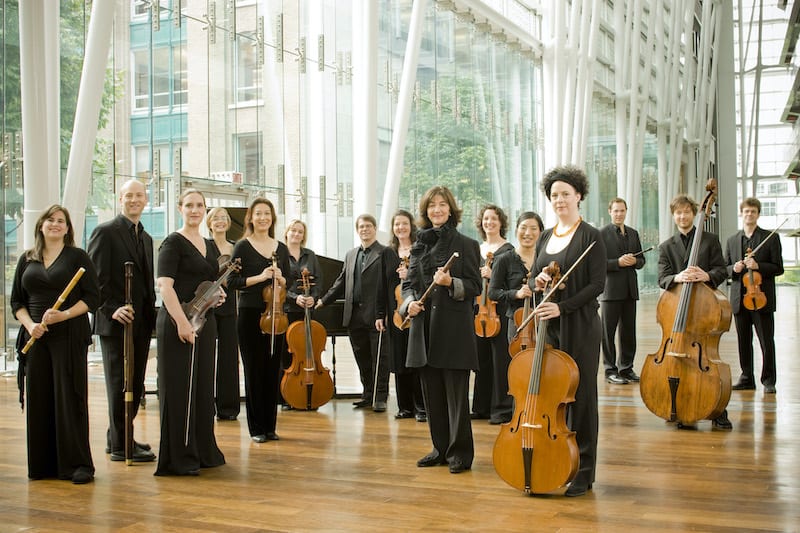The Baroque period – which lasted approximately from 1600-1750 – was a time of various stylistic and theoretical developments in the realm of classical music. Of particular significance was the birth of the orchestra, the development of opera, and the establishment of the Common Practice era, which governed the rules of harmony and structure for the next few hundred years.
Similarly, technical innovations allowed for the invention of many new instruments which would feature in these new ensembles and styles of music. However,d some of these were adaptations or relatives of instruments that existed in the preceding Renaissance era. Composers now began to write idiomatic music for the first time: pieces composed with specific instruments in mind, taking into account their unique sounds, ranges, and tonal qualities.
In this article, we’ll take a look at some of the key baroque instruments that played the beautiful, ornate music of the Baroque period. And while some of these might look strange or unfamiliar, others will be instantly recognizable, as modern versions of many of these baroque period instruments are still played today.
1. Harpsichord
Johann Sebastian Bach, one of the greatest composers of the baroque era, wrote many works for the Harpsichord, which are characterized by intricate, interweaving lines.
It looks rather like a piano but has a distinctive, rather twangy tone, which is one of the archetypal sounds of the Baroque period.
This is due to the strings being plucked by a trigger mechanism (whereas the strings on a piano are hit with a hammer mechanism).
Meanwhile, the Clavichord – a smaller, quieter relative of the harpsichord – was popular for use at home.
Here’s a video of the harpsichord so you can hear its unique sound.
2. Viol (Viola da Gamba)
Instruments from the Viol family (sometimes known as Viola da gamba) resemble members of the violin family, with the bass viol looking particularly like a cello.
But they differ in a number of ways: they have between five and seven strings and all viols are held upright, rather than under the chin like violins and violas.
They are no longer commonly seen apart from in some period groups and have been replaced in orchestras by the violin family of instruments (which we’ll look at later).
3. Sackbut (Trombone)
The Sackbut had existed since the Renaissance period, evolving out of the slide trumpet (or the tromba da tirarsi) but gradually became known by its English name: the trombone.
They often accompanied a church choir alongside cornetts (wooden pipe-like instruments – not to be confused with a cornet, which is a type of modern trumpet).
4. Baroque Flute
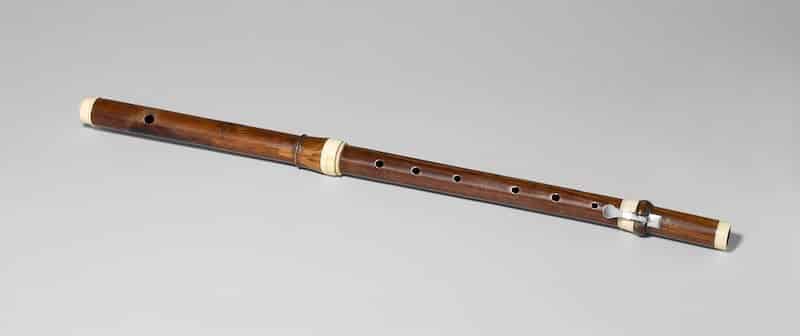
Sometimes referred to as a Transverse (meaning sideways-blown,) the Baroque Flute is closely related to the modern flute.
The main difference between the two is the materials used in their construction.
Nowadays flutes tend to be made out of metal but during the Baroque era they would have been made from wood.
5. Timpani
Also known as Kettledrums, the Timpani started to become an orchestral staple during the Baroque period.
They were typically used in military bands with trumpets and were known to even be carried on horseback!
Timpani usually came in twos and were tuned to the tonic and the dominant but composers like Haydn had as many as 7 in some classical pieces.
They feature in the opening of Monteverdi’s innovative opera Orfeo, while Johann Fischer uses their deep, booming sound to great effect in his Symphony With Eight Obbligato Timpani (as shown in the video above).
6. Pipe Organ
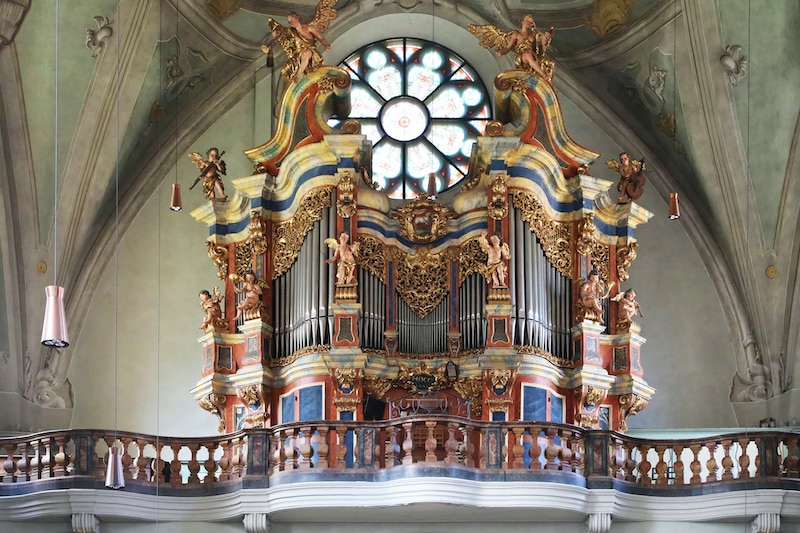
Another type of keyboard instrument that was very popular during the baroque era was the Pipe Organ, a large instrument commonly found in churches.
Bach, Handel, and many other composers wrote extensively for it, with the baroque period known as the ‘Golden Age’ for the pipe organ.
It creates sound in a very different way from the harpsichord, with pitches produced when pressurized air is driven through pipes of various sizes.
They are made in a huge different range of sizes, with some organs having only 12 or so pipes to larger ones having thousands of pipes that are built into the building itself.
It also can sustain notes much longer than its other keyboard counterparts, with the sound remaining constant when a key is played.
7. Pianoforte
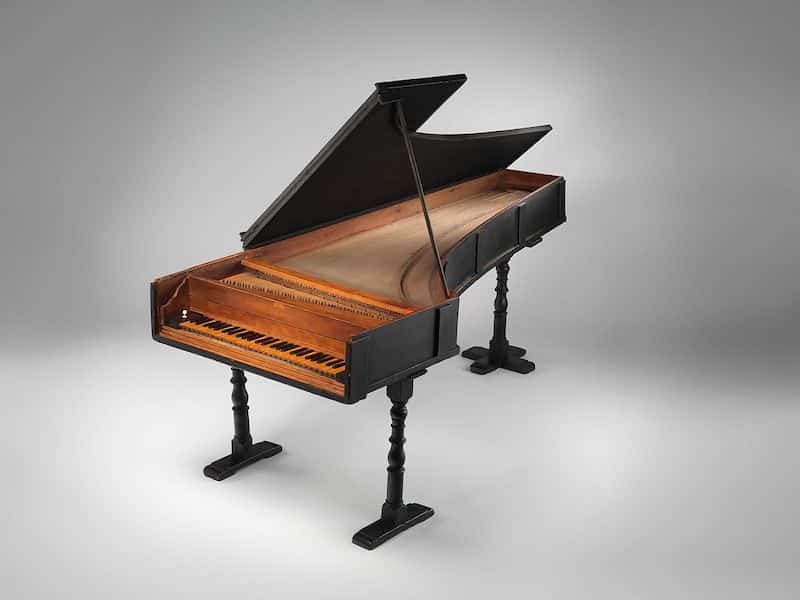
The Pianoforte, an early version of the modern piano, was invented by Italian instrument maker Bartolomeo Cristofori around the turn of the 18th Century.
Cristofori worked to invent it due to the other keyboard instrument’s lack of control over the dynamics they could create.
This is how it got its name: the pianoforte which literally is translated to ‘softloud’ due to it being able to play at different volumes.
Despite being classed as a string instrument it can also be considered a percussion instrument.
This is because rather than plucking the strings as the harpsichord does, the pianoforte uses hammers to strike the strings to create the sound just like a dulcimer.
Despite first being invented in the baroque era, they did not become popular until during the Classical period when composers wrote for it extensively.
8. Baroque Guitar and Lute
Next, we have the Guitar which in the Baroque period generally had five strings, but was otherwise similar to a modern acoustic guitar.
It took the place of the renaissance lute which was hugely popular for people to play at home.
Baroque guitars were used to play the basso continuo (which we’ll look at later in this article).
The Lute was also another very popular plucked baroque string instrument, which was often used for vocal accompaniment.
During the baroque period, string instruments would use gut strings (which were often made of animals intestines), rather than the synthetic ones used on modern instruments found today.
9. Natural Trumpet and Horn
Unlike their modern equivalent, Natural Trumpets do not have valves, meaning that they can only play notes from the harmonic series.
In Baroque music, they are often used to symbolize royalty or heavenly majesty.
Similarly, the Natural Horn was a valveless ancestor of the modern French horn.
10. Violin Family

The first Violins came about in the early 1500s and by the baroque period, they were using a number of string instruments that are still in use today.
Violins, violas, cellos and double basses all featured in a Baroque orchestra, albeit with some minor differences.
One such difference is the materials that the strings were made of.
11. Musette de Cour
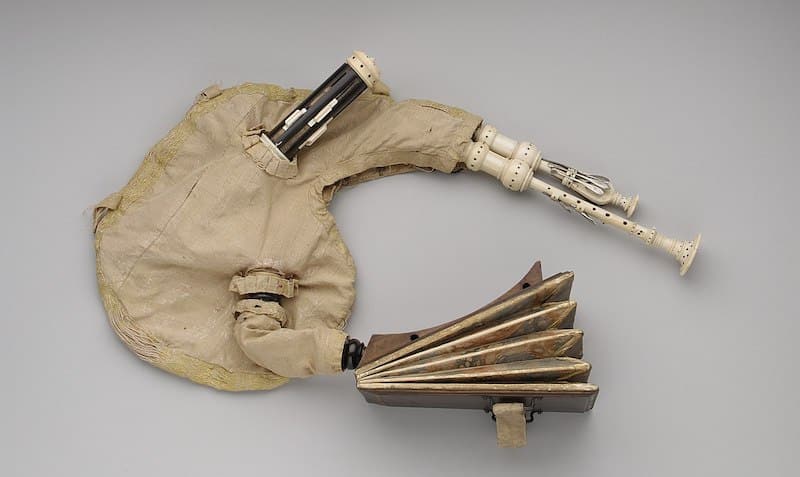
Next, we have a rather odd baroque instrument: the Musette de Cour, an instrument that came out of France towards the end of the 1500s.
It’s like a cross between an oboe and the bagpipes, possessing both a double-reed mouthpiece and a pair of bellows.
At its peak of popularity, it was often used in chamber music but also used extensively in operas but fell out of favor after the french revolution.
12. Bassoon, Oboe and Chalumeau
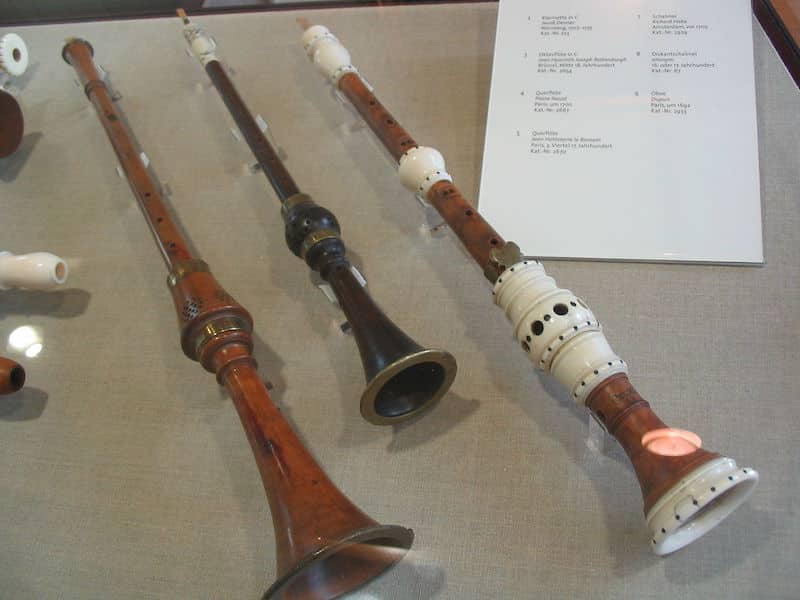
The first Oboes, which at the time was called the Hautbois – translated as high pitched wood – appeared on the music scene in the 1600s.
They evolved out of the Shawm which was another type of double reed instrument that were popular before that.
You also had the Bassoon, a double-reed instrument, was invented around this time, gradually supplanting its relatives and fellow double reed instruments the Dulcian and the Rackett – also known as the ‘sausage bassoon’!
The Chalumeau, a predecessor of the clarinet, was also in use.
13. Serpent
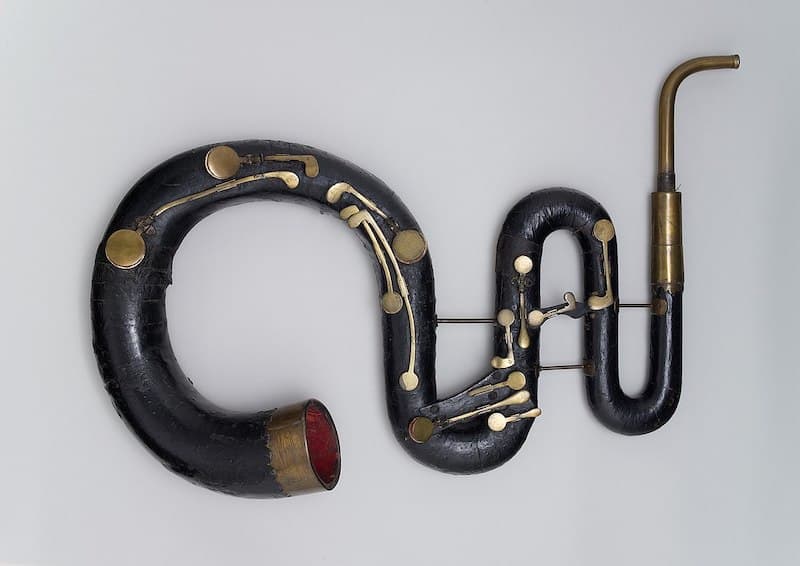
The Serpent is one of the most distinctive-looking members of the Baroque brass family.
A large instrument that plays in the bass register, it has a snake-like shape, is made of leather-covered wood, and has finger holes like a woodwind instrument.
Despite this, it is considered part of the brass family due to its cup-style mouthpiece; in fact, it is an ancestor of the modern-day tuba.
14. Recorder
The Recorder, which remains popular today, was one of the instruments used in baroque music to suggest pastoral scenes with composers like Telemann and Vivaldi utilizing its high pitched sound to evoke birdsong.
Like the pipe organ we looked at earlier, the baroque era is quite often considered the golden age of the recorder before falling out of favor during the classical and romantic eras.
15. Castanets
Castanets are a type of hand percussion that are now most commonly associated as being a flamenco musical instrument.
But, during the baroque era, they were commonly used in dances, notably by the composer Jean-Baptiste Lully.
Basso Continuo
Literally meaning ‘continuous bass,’ the Basso Continuo formed an integral part of baroque ensembles, with a role not dissimilar to a rhythm section in later styles of music like jazz.
It does not have fixed instrumentation but would feature at least one instrument capable of playing chords – such as a keyboard, harpsichord, organ, guitar or lute – and one or more low-register instruments such as cello, double bass, bass viol or bassoon.
Musicians in the Baroque era were expected to be competent improvisers.
The players of chordal instruments in the basso continuo would use figured bass notation – where the harmony is implied by numbers placed above a written bass line – to improvise an accompaniment part.
The Baroque Orchestra
The Baroque Orchestra – a large instrumental ensemble and a foundation of the Western classical tradition – was born in the Baroque period, as composers began to experiment with larger groups with multiple players on each part to attain a fuller sound.
However, the orchestra initially had no fixed instrumentation and was much smaller than a modern-day version.
It would often be directed from a keyboard.
Here’s an example of Jean-Baptiste Lully’s Dances For The Four Seasons which is played by a small Baroque orchestra:
Summing up Our List of Instruments From The Baroque Period
We hope you’ve found this guide to the instruments of the Baroque period illuminating.
While some items – such as the recorder, the trombone, and the violin – will be familiar to all music lovers, others, like the serpent and musette du cour, for example – probably look a little strange!
Others are still commonly played but in a slightly different form, like the flute, which is now made of metal rather than wood.
Thankfully, it is now possible to hear recordings and performances of the beautiful music of the Baroque period played on faithfully recreated period instruments.

